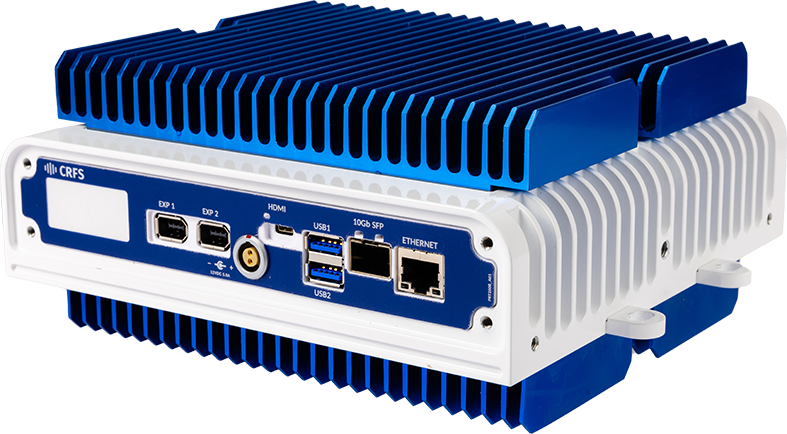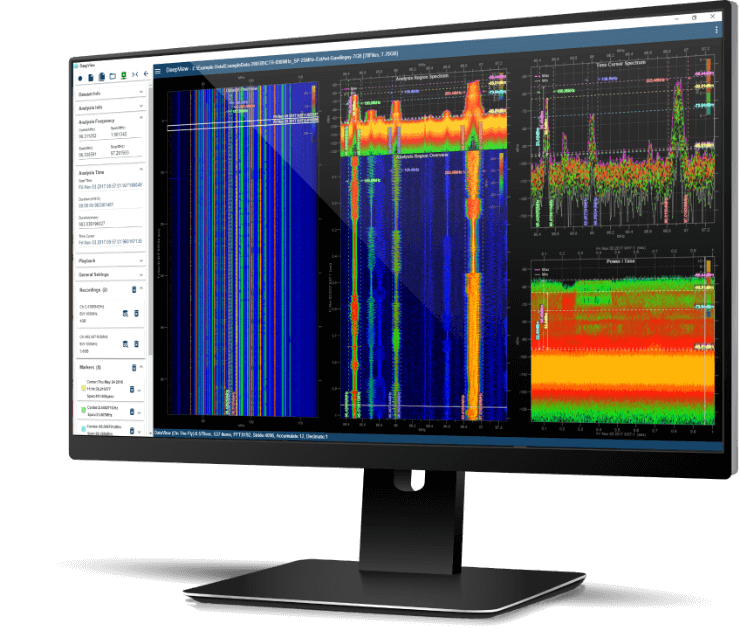Deployment stories
ACHIEVING SPECTRAL ABUNDANCE


How JOINER & CRFS are accelerating the UK’s future network technologies through spectrum research
DOMAIN: LandAPPLICATION: Spectrum monitoringCUSTOMER: Innovation Centre / University
SITUATION: JOINER — supporting the UK’s advanced connectivity agenda
Led by DSIT, the UK aspires to be a global leader in next-generation telecoms and digital infrastructure to improve connectivity and drive innovation and growth.
Joint Open Infrastructure for Networks Research (JOINER) was built to advance these aspirations.
JOINER is a university-led experimentation platform, funded through the EPSRC, with the mission to accelerate future communications and networks research, exploitation, and adoption. It enables industry, academia, and government to develop and test 6G technologies and co-create applications at scale on a neutral, heterogeneous platform.
This platform is not one physical space, but a comprehensive ecosystem, enabling multi-tenancy, training and skills development, international engagement, and more. Each JOINER terminal hosts high-performance server infrastructure and is interconnected via high-speed networking, enabling distributed, collaborative experimentation. The JOINER brain is a central software platform located at the University of Bristol, which coordinates and manages resources across all terminals, enabling remote control over the infrastructure.
We must continually strive to maximise access to and use of spectrum... This will require a range of measures, including implementing new spectrum management techniques, adopting innovative technologies that enhance spectrum efficiency, and enhancing spectrum sharing.

SOLUTION: The JOINER NSF — Delivering spectrum abundance
DSIT and OFCOM’s spectrum strategies share a common objective: ensuring that access to spectrum is never a barrier to social or economic progress. Recognising the central role of the electromagnetic spectrum in enabling innovation and growth, JOINER established the JOINER National Spectrum Facility (NSF), a platform built to deliver spectrum abundance.
However, achieving that vision demands more than lab simulations; it requires real-world, large-scale experimentation across wide bandwidths and diverse environments. To deliver this, the JOINER NSF must carry out two tasks: monitor how spectrum is used in the real world and make the resultant data openly available to researchers.
Pursuing these objectives required JOINER NSF to deploy highly sensitive RF sensors to capture, record, and playback I/Q data across the UK.
Recognising the critical role of RFeye Nodes in enabling high-fidelity spectrum monitoring, the JOINER NSF will extend deployment to all terminals nationwide.
RESULTS: CRFS — empowering national spectrum research
To meet its need for persistent, high-fidelity monitoring across wide geographic areas, JOINER selected CRFS’ RFeye Node Plus, one of the few sensors capable of combining 9kHz–18GHz wideband monitoring with long-distance data transfer and fast edge processing.
Combined with forensic signal analysis software, this technology allows researchers to undertake I/Q data capture and analysis from real-world RF environments across the UK.
Related products
Hardware and software related to this deployment story.

RFeye Node Plus 100-18
Portable, rugged, exceptionally fast RF sensor with full 100 MHz I/Q recording and streaming for enhanced detection, POI and signal intelligence.

RFeye DeepView
RFeye DeepView is a forensic signal analysis software solution offering a 100% probability of intercept.
